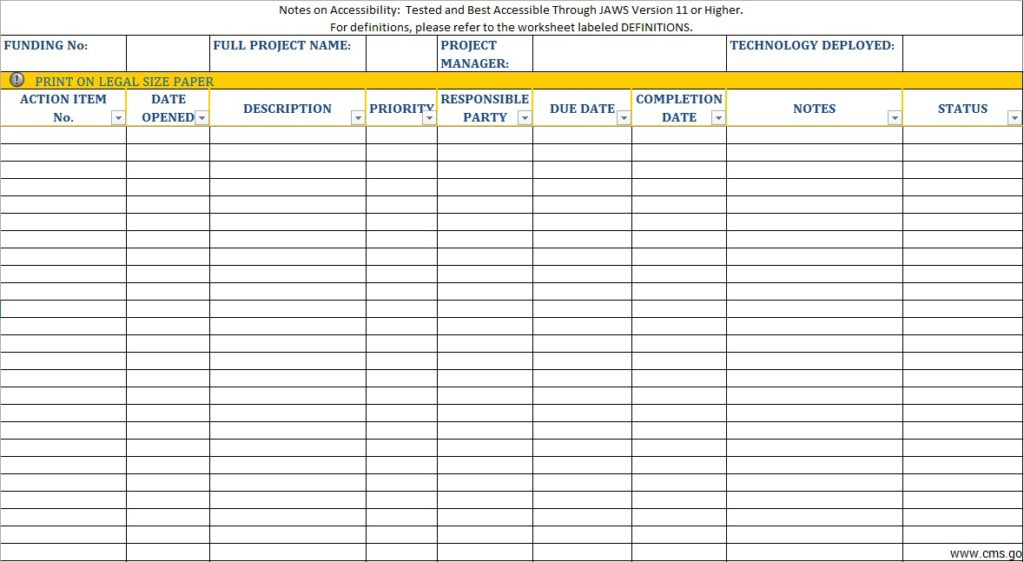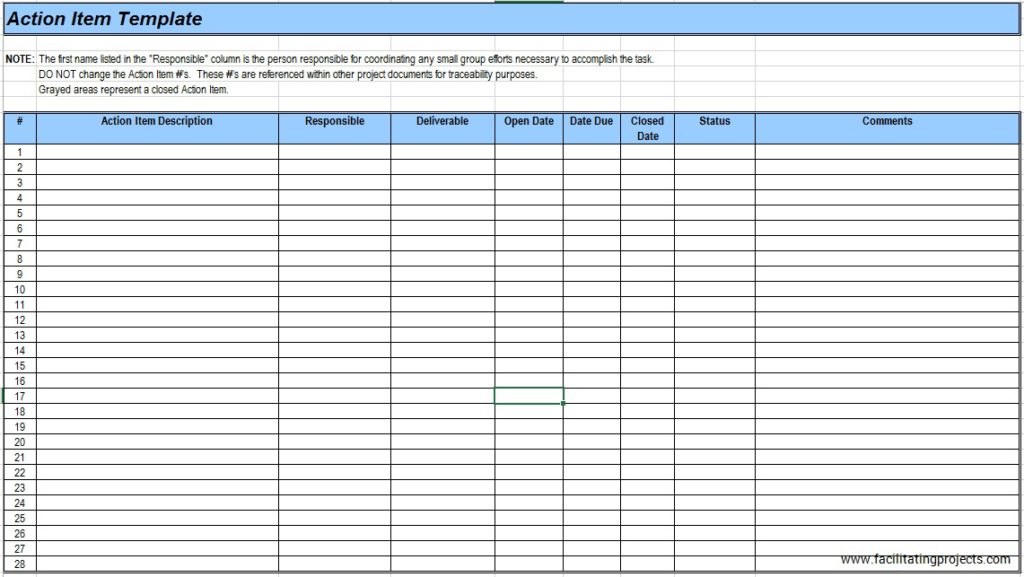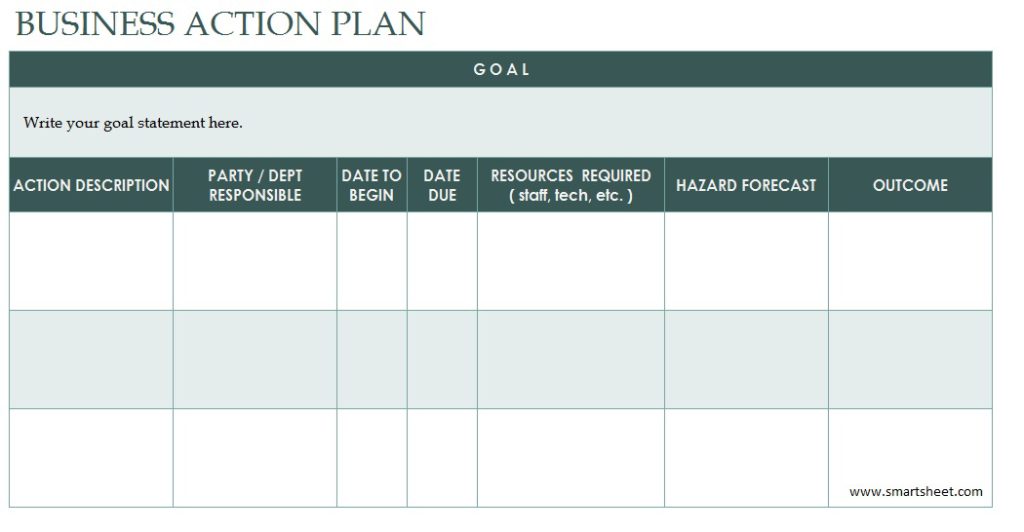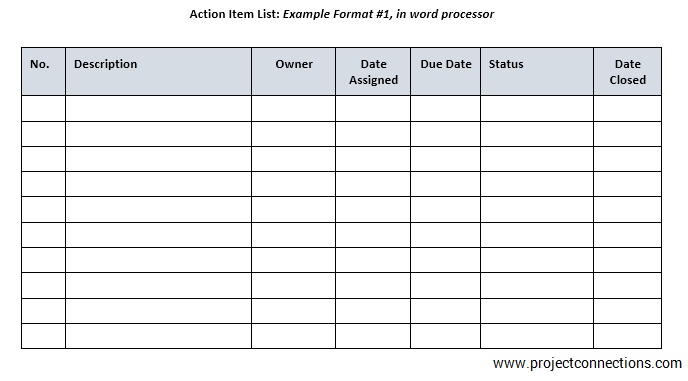Download these 10 Free Sample Action Log Templates to help you record your actions. You can also check out our Mileage Log Templates and Daily Log Templates collection.
The action means a work consists of discrete tasks that an individual or a group has to complete in a particular time. When the work is on big ground people like to see every detail preserved and organized. To save time and record the actions done or performed in the company, an action log book has been prepared. This book contains information about the time each employee spends doing one task. It organizes your work and allows you to keep your eye on each activity going on in your office.
These log books can be used by the owners to give the task to each employee and this helps in summing up the work that each person is doing in a day. You can calculate the resting hours, lunchtime, and working hours of your office.
Contents
Key Components of an Effective Action Log
An action log is a standardized form used to track tasks, responsibilities, and overall progress in a project or organization. For an action log to be effective, it has to contain certain key components that ensure clarity, accountability, and timely execution. The basis of a good action log is a clear description of the action item, which may describe the task expected to be done in a short but complete way. Each action item should be worded in such a way that no doubt can arise as to what is expected to be done, thus ensuring maximum understanding among team members as to their responsibilities.
Assigning ownership of tasks constitutes yet another major element. Every individual action can be said to have its individual or else particular team assigned to the actual getting of the work done. Accountability is thereby enhanced while confusion on who is to take the next step is also avoided. Besides ownership, the log should also indicate the priority level that distinguishes tasks of high impact as opposed to ones that are merely routine; in this way, teams can spend their time in an effective manner. An action log should also include due dates and timelines for task accomplishment within the stipulated time.
Keeping abreast of status updates, enables a much closer view of the progress while recognizing potential delays. Action logs should entail columns indicating pending, in progress, or completed statuses in their logs. This would ensure managers quickly review project status and bring corrective measures concerning the task when there is a need. It further provides space for comments or additional notes with which team members were allowed to put down whatever information they felt relevant concerning roadblocks or updates. Key components that make an action log still remain a practical and valuable tool toward improvement of efficiency and project success.
Download Free Action Log Templates
It can build up the pressure of completing work. You might ask for extra work from your employee and you are stealing the resting hours from your employee so you need to mention tasks with maturity.
Types of Action Log Templates
Templates for action logs take on different formats depending on the particular needs of an individual, group, or organization. From simple task trackers to highly-sophisticated project management logs, these templates can prove their worth toward accountability and effectiveness in work that is always ongoing. Below are some of the common types of action log templates.
Simple Action Item Trackers
This action item tracker is the most basic type of action log. It is for either individuals or a team seeking to keep records of tasks, deadlines, or how many hurdles have been crossed with a simple structure. Action item logs are usually filled with basic areas like task description, person to whom it is assigned, due date, and status. There are customizable templates available on Smartsheet, Plaky, or Vertex42.com that allow users to track action items with minimal efforts. Such templates work especially well for personal productivity, small groups, or businesses looking for an easy-to-use task-tracking system.
Meeting-Specific Action Logs
Meeting action logs serve to capture some of the essential tasks and follow-ups discussed in a meeting. The logs assure that conversations convert into concrete action items through record of any decisions made, the assignment of tasks to individuals, and the establishment of deadlines for said tasks. The logs work to reduce miscommunication, ensuring all stakeholders have been kept apprised of the next steps.
Project Management Action Logs
In tracking the tasks, dependencies, and overall progress for more complex projects, a project management action log becomes an irreplaceable tool for teams. Unlike simple trackers, these logs integrate with wider project timelines to ensure every task aligns with strategic objectives. Other fields may be included that are relevant to risk evaluations, priorities, and project milestones. Many project management software such as Smartsheet and Vertex42.com have templates ready for users to track their project activities seamlessly.
Rolling Action Item Lists (RAIL)
A Rolling Action Item List (RAIL) is a live log for updating unfinished or completed actions from one point in time to another. Unlike classical action logs that are reset following closure of a project or meeting, RAILs contain the history of all actions. Therefore, this action log is suitable for projects geared towards long-term objectives or continuous process improvements. It ensures that no tasks slip through the cracks and aids teams in tracking their efforts over extended periods. Organizations and teams that wish to undertake a structured approach to managing longer-term tasks can find templates in Smartsheet and other project tracking software.
Action Logs – Pros
Once you are in touch with it, you can see it working and giving you a good result.
It informs you about the weaknesses and the reason behind them. When you have the record of each day’s activity you can figure out the issues using your log book. This way you don’t need to ask each person individually about his daily routine.
It increases production because the employees submit work on time and the chances of delay are less so automatically you can see the difference in the status of your work.
When you provide your employees with every day’s tasks ready on their desks then they will spend less time using other apps and won’t be engaged with the social apps. It will build up responsibilities in their head and they will be punctual. It will minimize the low-value tasks from the routine of your employees.
One of the secrets behind success is the management of time and the action log books are designed to save your time. When you spend fewer hours on stupid activities the task you are provided with is automatically completed on time. In this way, you can also save time for some other tasks.
The most beneficial use of the activity log is that it has all the details about each small activity.
Action Logs – Cons
There are not many cons of an action log, but whatever is there can be handled easily.
- It can be time-consuming.
- It is based on accurate filling which is dependent on honest workers. There is always a chance of errors in everything.
Common Challenges and Solutions of Action Logs
Action logs are very useful in monitoring task status while also ensuring accountability and maximizing efficiency. However, organizations and teams tend to face greater challenges in making action logs work. Such challenges constitute issues with updating, clarity, and accountability. Awareness and resolution of these challenges render action logs much more functional and reliable.
Overlooking Updates: Implementing Regular Check-Ins
There is a common issue with action logs regarding regular updates. Without a consistent review of action items, tasks may fall through the cracks and deadlines can be missed, leading to confusion. Such issues are common in fast-paced environments where priorities must be constantly shifted. A practical option that can be exercised is to institute regular check-ins, either weekly or biweekly, to ensure that action logs remain current. Assigning a specific person to be in charge of reminding others about updates can help keep the logs accurate and relevant. Automated reminders for pending or overdue tasks serve to further ensure a consistent approach to tracking progress.
Ambiguous Task Descriptions: Promoting Clarity and Specificity
Furthermore, lack of clarity in task definition is another challenge. Team members may not appreciate what they are supposed to do since their task definitions are vague and imprecise. Therefore, assignment is delayed or never completed. This can be remedied by ensuring description of every action item with clear and specific words. This should include what needs to be done, what it needs to achieve, significance and/or consequences, and any dependencies. Establishment of a standard format for logging action items with specific fields such as description, deadlines and resources helps in ensuring uniformity to overcome vagueness.
Lack of Accountability: Assigning Clear Ownership
Action logs become ineffective when tasks are not clearly assigned to individuals. If there are multiple people accountable for the same task without ownership, confusion can arise as to who is responsible for completing it. Therefore, every action item should be assigned to a given person or team with an expectation of responsibility. An escalation process for overdue items will make sure unresolved items are followed up in a timely manner. Open communication among team members about what they are working on and any potential roadblocks also cultivates a culture of accountability.
By targeting with structured solutions some of the common challenges that may exist, organizations can contribute to the enhancement of the effectiveness of their action logs. A well-kept action log improves task tracking and nurtures a more disciplined approach to project and team management, assisting in achieving goals with greater efficiency.










